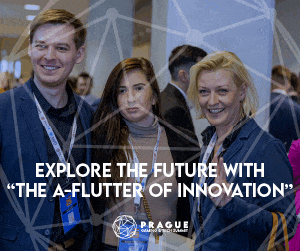Tokenization, Institutional Adoption, and On‑Chain Infrastructure
The blockchain ecosystem is maturing at an unprecedented pace in mid‑2025. Tokenization of real‑world assets—from stocks to securities—continues to reshape capital markets, while institutional players stretch into DeFi‑style products and on‑chain clearing services. Meanwhile, Web3 startups double down on Bitcoin treasury strategies and fractionalized access to high‑growth private companies. Key themes emerging today:
-
Accessibility & Liquidity: Tokenized stocks and fractionalized private equity are breaking down traditional barriers, democratizing access for retail and accredited investors alike.
-
Institutional Infrastructure: Broker‑dealers, clearing firms, and market‑infrastructure providers are building end‑to‑end on‑chain workflows, from issuance to settlement.
-
Capital Flows: New funding rounds and repo agreements underscore confidence in blockchain firms’ long‑term strategies, even as regulatory scrutiny intensifies.
Below, we unpack each story, explore its relevance, and offer an opinion‑driven take on what it means for blockchain’s evolving landscape.
1. Robinhood’s Bold Tokenization Push
Summary: Robinhood today unveiled an expansive suite of tokenized products at its “To Catch a Token” event in Cannes. Highlights include US stock and ETF tokens for EU users, a proprietary Layer 2 blockchain (built on Arbitrum) for real‑world asset tokenization, crypto perpetual futures in the EU, and crypto staking support in the US and EU. This move transforms Robinhood from a simple trading app into an all‑in‑one Web3 investment platform aiming to host equities, derivatives, and DeFi features under one roof.
Source: Robinhood Newsroom
Analysis & Opinion:
Robinhood’s initiative exemplifies the tokenization trend that promises 24/7 global markets and near‑instant settlement. By issuing stock tokens on Arbitrum with zero commissions and dividend passthrough, Robinhood tackles two major Web3 hurdles: liquidity and regulatory compliance. However, success will depend on:
-
Regulatory Clarity: EU regulators have been more permissive than US counterparts, but tokenized equities still face complex compliance tracks—Robinhood must navigate local MiCA updates and custody rules.
-
User Education: Retail investors may conflate tokenized stocks with derivatives; clear UX and risk disclosures are critical to prevent misunderstandings and potential legal disputes.
-
Ecosystem Partnerships: Integrations with Bitstamp for perpetuals and plans for self‑custody wallets suggest Robinhood is building an open ecosystem—but will need third‑party audits and open‑source tooling to earn developer trust.
This bold expansion underscores the convergence of CeFi and DeFi—but only time will tell if Robinhood can deliver institutional‑grade security at retail‑friendly scale.
2. Quantum Blockchain Technologies’ Repo Extension
Summary: Quantum Blockchain Technologies Plc has extended its Sale & Repurchase (REPO) Agreement covering 5 million ordinary shares to December 31, 2025, with a 5% annual interest‐adjusted repurchase price and automatic six‐month rollovers if unexercised. The extension aligns leadership incentives and preserves the company’s capital structure amid ongoing investments in quantum computing, blockchain, and AI ventures.
Source: Cision News
Analysis & Opinion:
While repo agreements are common in traditional finance, their use by a blockchain‐focused investment company signals sophisticated balance‑sheet management. This extension:
-
Enhances Financial Flexibility: Automatic rollovers grant Quantum Blockchain breathing room to deploy capital into new crypto projects without immediate dilution.
-
Aligns Leadership Interests: By tying the CEO’s ability to repurchase shares to performance, investors gain confidence that management is committed to long‑term value creation.
-
Signals Market Sentiment: The willingness of counterparties to agree to extend at a 5% rate suggests optimism about QBT’s growth prospects in the blockchain arena.
For blockchain startups, this move illustrates how traditional financing instruments can complement token sales and venture funding—helping companies weather bear markets and double down on R&D in DeFi and NFTs.
3. The Blockchain Group’s €11 Million Bitcoin Raise
Summary: Europe’s first Bitcoin Treasury Company listed on Euronext Growth Paris—the Blockchain Group—has raised €11 million via warrant conversions and new equity subscriptions, including participation by Blockstream’s Adam Back. The capital infusion funded the acquisition of 60 BTC (€5.5 million), bringing total holdings to 1,788 BTC (€161.3 million), with a target of 1% of Bitcoin’s supply by 2032.
Source: Ainvest / Coin World
Analysis & Opinion:
The Blockchain Group’s aggressive BTC accumulation strategy illustrates corporate treasury diversification into digital assets. Key takeaways:
-
Institutional Validation: High‑profile backers like Adam Back and TOBAM signal growing institutional trust in Bitcoin as a portfolio hedging instrument.
-
Shareholder Alignment: By expanding the fundraising limit to €500 million and securing 95% approval, the company demonstrates broad shareholder support for a crypto‑native vision.
-
Risk Considerations: A concentrated Bitcoin bet carries price‐volatility risk. The company must balance hodling conviction with liquidity needs for operations.
This trend dovetails with a broader movement: public and private entities embedding Bitcoin alongside cash and equities—a clear nod to the asset’s maturing role in corporate finance.
4. Prometheum Capital’s Clearing Authorization
Summary: Prometheum Capital, a FINRA member and SEC–registered special purpose broker‐dealer, is now authorized to provide correspondent clearing services for blockchain‐based securities. This authorization enables third‐party broker‐dealers to custody, clear, settle, and recordkeep on‐chain securities—unlocking $24 billion+ in tokenized assets for broader market participation.\
Source: Business Wire
Analysis & Opinion:
Prometheum’s correspondent clearing milestone is a watershed for regulated on‐chain markets:
-
Infrastructure Leap: Clearing and settlement services have been a missing link for institutional adoption of tokenized securities; Prometheum fills that gap.
-
Market Modernization: By bridging legacy broker‑dealers with on‐chain rails, Prometheum supports migration of the $130 trillion securities industry onto blockchain.
-
Competitive Dynamics: Traditional clearinghouses may now face pressure to develop their own DLT offerings or partner with on‐chain specialists to stay relevant.
For DeFi developers and institutional teams, this marks a pivotal moment: digital asset securities can now flow through standardized, compliant channels—opening doors for ETFs, tokenized bonds, and cross‑border issuance.
5. Republic’s Tokenized SpaceX Shares
Summary: Investment platform Republic has launched fractional “mirror tokens” that replicate SpaceX share performance, allowing retail investors to gain exposure with as little as $50. The rSpaceX token is capped at $5,000 per investor, purchasable via Apple Pay or stablecoins, and operates under Republic’s SEC crowdfunding license—though it carries no shareholder voting rights or official affiliation with SpaceX.
Source: Investopedia
Analysis & Opinion:
Republic’s tokenized access to SpaceX epitomizes Web3 democratization:
-
Fractionalization Upshot: By converting private equity into on‐chain tokens, Republic expands private‑market access beyond accredited investors—fueling retail interest in DeFi‑style products.
-
Regulatory Gray Zones: While legal under current JOBS Act provisions, these tokens raise questions about disclosure, valuation transparency, and counterparty risk if Republic cannot fulfill redemption promises.
-
Beyond SpaceX: Success could spur similar offerings for other unicorns (e.g., OpenAI, Figma), further blurring lines between venture capital, token launches, and secondary markets.
This innovation spotlights blockchain’s power to reimagine equity markets, though it also underscores the need for robust investor education and regulatory frameworks to safeguard retail participants.
Conclusion: Bridging TradFi and DeFi
Today’s headlines underscore a central theme: blockchain is the connective tissue linking traditional finance to decentralized paradigms. From tokenized equities and Bitcoin treasury companies to on‑chain clearing services and fractionalized private‑equity tokens, the industry is charting a course toward:
-
Interoperable Infrastructure: Layer 2 chains, correspondent clearing, and RAG‑enabled governance models are removing friction for mainstream adoption.
-
Innovative Capital Structures: Repo extensions and equity raises demonstrate hybrid financing strategies that leverage both token sales and proven financial instruments.
-
Democratized Access: Fractional tokens and staking products are opening new participation avenues for retail and institutional investors alike.
As blockchain projects continue to scale, stakeholders must balance innovation with compliance, security, and transparency. Those who master both DeFi’s agility and TradFi’s rigor will lead the next wave of the digital economy.
Stay tuned to Blocks & Headlines—where insights drive strategy, and every briefing illuminates the path forward in blockchain and cryptocurrency.















Got a Questions?
Find us on Socials or Contact us and we’ll get back to you as soon as possible.